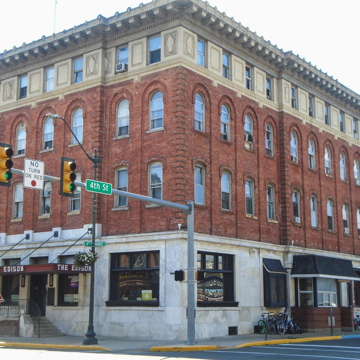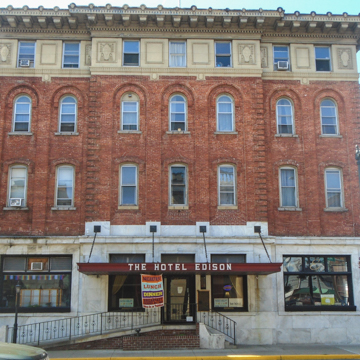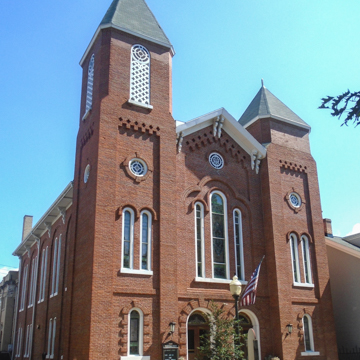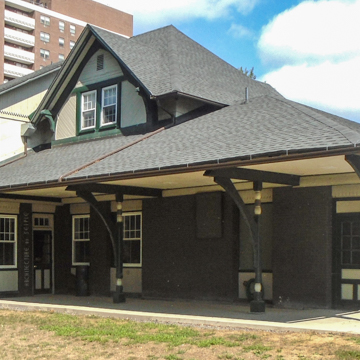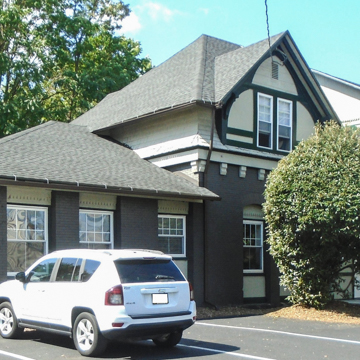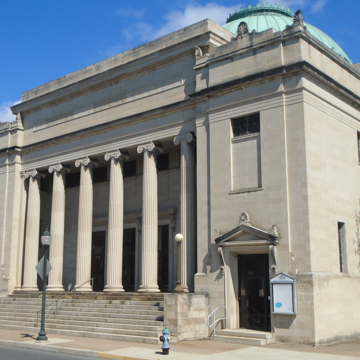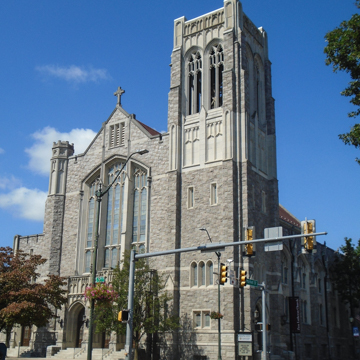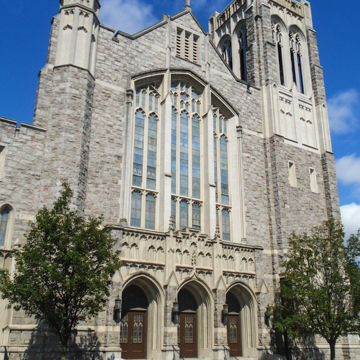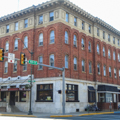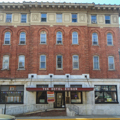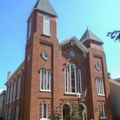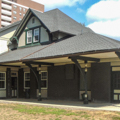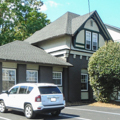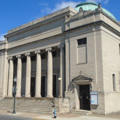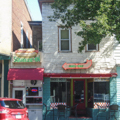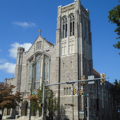Downtown Sunbury contains a wealth of pre–Great Depression buildings including some that played a role in the beginnings of Thomas Edison's electrification of the nation. In 1883, Edison lighted the post–Civil War, Italianate City Hotel (1914 rebuilt after a fire, E. J. Drumheller; 401 Market Street), since renamed for Edison, the First Presbyterian Church (238 Market Street), and the Reading Railroad Station (c. 1880, Frank Furness; 159 S. 2nd Street). Other impressive buildings include the Albright United Methodist Church (1927, J. C. Fulton; 5th and Chestnut streets), a monumental Beaux-Arts design for the First Evangelical Church congregation. The values of downtown real estate are evident in the locally famous “Squeeze-In,” a tiny restaurant (1945; 448½ Market Street) squeezed in an alley between two earlier buildings. At 5th and Market streets, Zion Lutheran Church (1921) attests to the core German population of the region in its Perpendicular Gothic facade by Reading architects Richter-Lee.
You are here
Downtown Sunbury
If SAH Archipedia has been useful to you, please consider supporting it.
SAH Archipedia tells the story of the United States through its buildings, landscapes, and cities. This freely available resource empowers the public with authoritative knowledge that deepens their understanding and appreciation of the built environment. But the Society of Architectural Historians, which created SAH Archipedia with University of Virginia Press, needs your support to maintain the high-caliber research, writing, photography, cartography, editing, design, and programming that make SAH Archipedia a trusted online resource available to all who value the history of place, heritage tourism, and learning.















